In a world where the user experience has become king, UX designers are the knights in shining armor wielding their creative swords. But what does it really mean to be a UX designer freelancer? Picture this: waking up whenever they want, sipping coffee while brainstorming ideas, and choosing projects that fuel their passions. Sounds dreamy, right? Yet there’s much more than just the glamor and flexibility. This guide dives into the ins and outs of being a UX designer freelancer, showing you how to navigate the hopes, dreams, and a few hiccups along the way. Let’s immerse and uncover the secrets of turning your UX design expertise into a thriving freelance career.
Table of Contents
ToggleUnderstanding The Role Of A UX Designer

A UX designer focuses on optimizing the interaction between users and products, ensuring that every click, swipe, and scroll is as smooth as silk. They wear many hats, researcher, information architect, and user advocate, to name a few. It’s their job to step into the user’s shoes (or flip-flops) and navigate through their experiences, making sure everything feels intuitive.
Not only is it about aesthetics, but a UX designer also conducts extensive user research. This aims to understand users’ needs and how they interact with products. They create user personas, conduct usability tests, and develop information architectures. Eventually, their goal is to enhance user satisfaction, because a happy user is a repeat user.
Freelancing adds another layer to this role. Freelance UX designers often juggle multiple clients with varying needs while ensuring that each project aligns with their own design philosophy. This flexibility can lead to creative exploration, but it also demands exceptional time management and communication skills.
Essential Skills Required For UX Freelancers
To thrive as a freelance UX designer, one needs a treasure chest of skills, far more than what a magic wand can provide. First, let’s talk about design tools. Familiarity with software like Adobe XD, Sketch, and Figma is essential. These tools are the paintbrushes that help turn imaginative ideas into tangible designs.
Next is the need for an analytical mindset. Freelancers must love digging into user data, examining analytics, and understanding user behavior. This skill doesn’t just improve designs: it enhances their overall strategy and decision-making.
Communication is key. Freelancers not only create designs but also have to articulate their ideas clearly to clients. They must convey the why behind design choices, ensuring clients see the big picture.
Finally, adaptability is crucial. Even the best-laid plans can go awry, so UX freelancers must adapt their strategies based on client feedback, market shifts, or new user data.
Building A Successful Freelance Portfolio
Imagine walking into a gallery showcasing your finest pieces. That’s precisely what your portfolio should feel like. A compelling portfolio not only demonstrates skills but also tells a story. It should highlight diverse projects displaying different aspects of your expertise.
Incorporate case studies that walk potential clients through your design process. Begin with the problem, explain your research, and detail how you arrived at the solution. Don’t shy away from showcasing your mistakes, demonstrating growth can actually help build trust.
Keep it clean and user-friendly, yes, UX applies here, too. Make navigation simple, with clearly labeled sections. Ensure your contact information is prominent, making it easy for interested clients to reach you.
Finding Clients As A Freelance UX Designer
The quest for clients can feel like searching for a needle in a haystack. But, several strategies can make this process smoother. Start by networking with other designers and professionals in the industry. Attend UX conferences or meetups: you never know when a casual conversation might lead to a project.
Leverage online platforms, sites like Upwork, Freelancer, and Behance can connect freelancers with potential clients. Tailoring profiles to reflect skills and utilizing a good mix of descriptive keywords can improve visibility.
Social media is another powerful tool. By showcasing work on platforms like Instagram or LinkedIn, freelancers can attract attention and engage with a broader audience. Sharing tips, case studies, and helpful content can establish credibility in the field.
Setting Your Rates And Negotiating Contracts
Setting rates can feel like threading a needle in a windstorm, particularly in a freelance environment. Many factors come into play, including experience, project complexity, and industry standards. Beginners might start lower to build their portfolio, but as skills and reputation grow, so should the rates.
Negotiation is an art. Establishing what one feels comfortable with is essential, but it’s also crucial to understand client needs and budget constraints. A well-structured contract protects both parties and outlines the scope, deadlines, and payment terms clearly. This is the safety net of freelancing, defining expectations keeps headaches at bay.
Best Practices For Managing Your Freelance Business
Successful freelancers understand that being a UX designer is only half the job. The other half involves running a business. Excellent time management is vital, enabling them to juggle various projects while meeting deadlines. Tools like Trello or Asana help keep tasks organized.
Stay proactive about finances. Set aside funds for taxes, track expenses diligently, and use accounting software to simplify invoicing. Regularly reviewing financial health enables informed decisions about spending and investing in personal development.
Also, maintaining a work-life balance is crucial. Freelancers should establish a dedicated workspace, set working hours, and embrace breaks to avoid burnout. Keeping creativity fresh often comes from stepping back.


